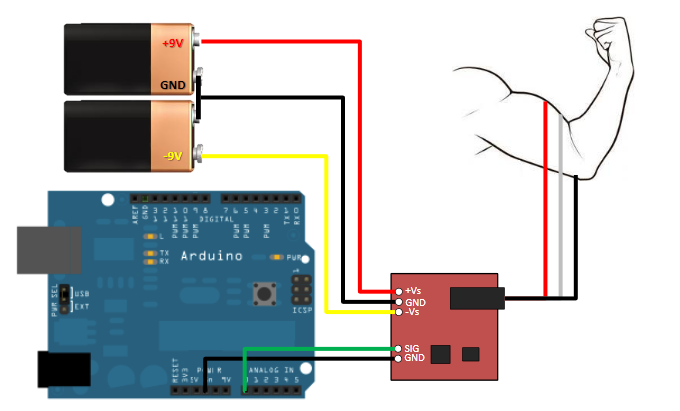
Designing an Arduino-based EMG monitor
Learn now to design an Arduino-based EMG monitor using an AD8226 EMG sensor.
It is a sensor that uses two 9V batteries.
Is there a problem if I use these two batteries as two AC adapters?
Will using two AC adapters break the EMG circuit board?
